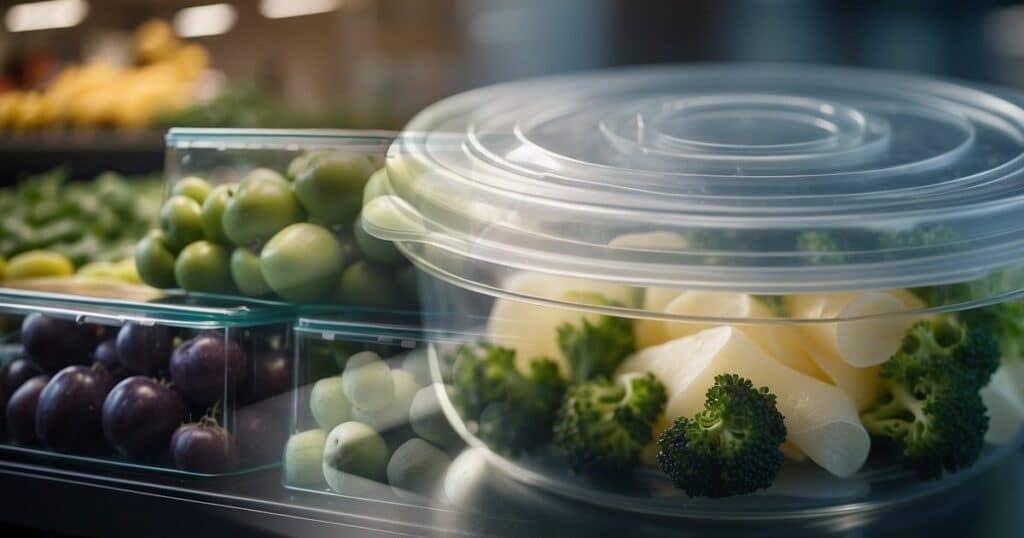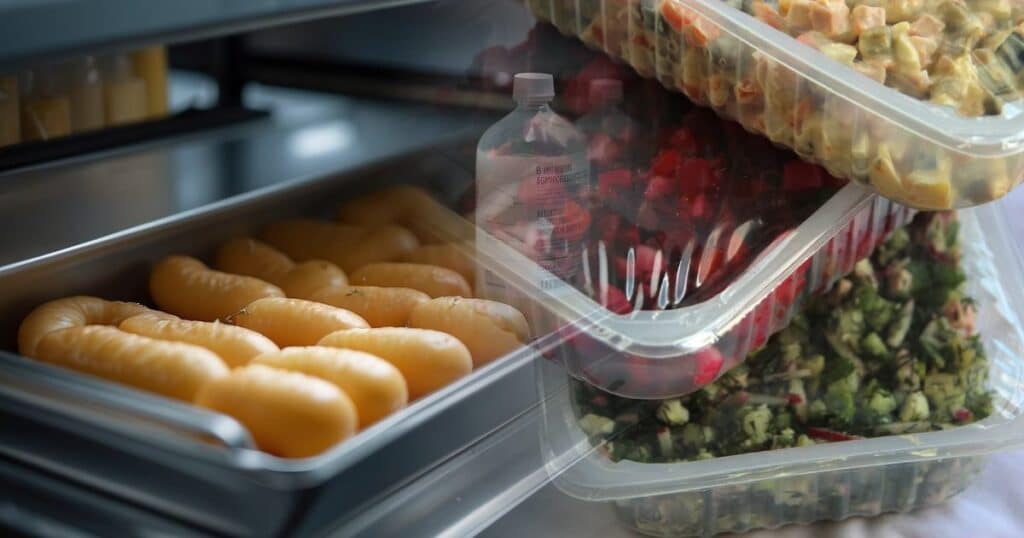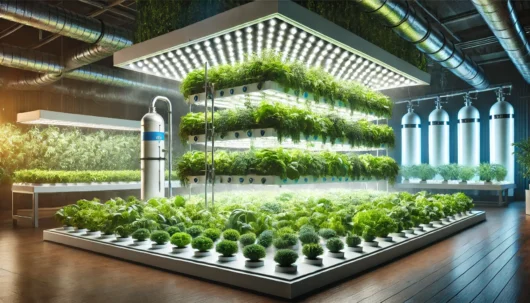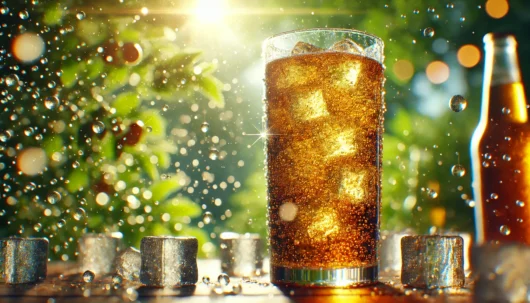In food preservation, nitrogen is pivotal in keeping your favorite snacks and goods fresh longer. As an inert gas, nitrogen is used extensively in food packaging to displace oxygen, which is the primary culprit in the oxidation process that leads to spoilage. By filling the packaging with nitrogen, food manufacturers create an environment less hospitable to bacteria and other spoilage agents, thus extending the product’s shelf life.
When you purchase packaged foods, you may not realize that the crunchiness of your chips or the freshness of your coffee is often due to nitrogen gas. This method is part of modified atmosphere packaging (MAP), a process that adjusts the atmospheric composition inside the packaging. Nitrogen ensures that the food’s original flavor, texture, and quality are maintained until you’re ready to enjoy it. Consequently, nitrogen in food packaging enhances the product’s longevity and reduces food waste, benefitting both consumers and manufacturers.
Key Takeaways
- Nitrogen displacement of oxygen in packaging reduces spoilage.
- Modified atmosphere packaging with nitrogen maintains food quality.
- The process supports sustainability by minimizing food waste.
Basics of Nitrogen in Food Packaging

In food preservation, incorporating nitrogen into packaging systems is paramount for maintaining freshness and extending the shelf life of various products.
Understanding Nitrogen and Its Properties
Nitrogen is a colorless, tasteless, and odorless inert gas that makes up about 78% of the Earth’s atmosphere. Also, its inert quality means it does not efficiently react with other substances, which is crucial in food packaging. By displacing oxygen, nitrogen helps prevent the oxidation that can spoil food.
Role of Nitrogen in Food Preservation
The primary function of nitrogen in food preservation is to oust the oxygen from food packaging. This reduced oxygen environment curtails the growth of aerobic bacteria and mold, which require oxygen to thrive. Consequently, spoilage is delayed, freshness is preserved, and the shelf life of products is significantly enhanced.
Nitrogen Generators and Delivery Systems
Modern food packaging facilities often use on-site gas systems, such as nitrogen generators, to produce food-grade nitrogen on demand. These systems can range from nitrogen cylinders for small-scale operations to advanced nitrogen membrane and pressure swing adsorption technologies for large-scale production. Producing gaseous nitrogen on-site is a cost-effective and sustainable alternative to delivering cylinders, reducing transportation costs and environmental impact.
Application and Impact on Quality

In food packaging, nitrogen is pivotal in maintaining product quality and longevity. Understanding its application and effects is crucial for recognizing its benefits to the food industry.
Modified Atmosphere Packaging Techniques
Modified atmosphere packaging (MAP) is a technique you’ll find widely utilized by food manufacturers. Furthermore, this process involves displacing oxygen within a package with gases like nitrogen and carbon dioxide. Nitrogen is colorless, odorless, and non-reactive, making it a suitable choice for maintaining the purity of a range of products, from coffee beans to vegetables. The introduction of nitrogen into packages of chips serves not just as a preservative but also as a cushion to prevent physical damage.
Effectiveness Against Contaminants and Microorganisms
When your food products are exposed to oxygen, they become prone to the growth of bacteria, which accelerates spoilage. Nitrogen flushing replaces oxygen, substantially slowing the growth of microorganisms and contaminants. This aligns with FDA food safety regulations and good manufacturing practices, ensuring that products like beer or crackers remain free from spoilage agents, thus extending their shelf life on grocery store shelves.
Influence on Flavor, Freshness, and Shelf Life
The absence of oxygen due to nitrogen flushing maintains packaged foods’ flavor, freshness, and aroma. When food remains inert in a nitrogen atmosphere, it stays fresher longer, and its natural tastes are preserved. This effect is especially noticeable in maintaining the unique flavors of coffee, where any ingress of moisture or oxygen can lead to a rancid taste. For items like beans and crackers, nitrogen helps to maintain your enjoyment of their intended crispness and flavor profile.
Frequently Asked Questions
In food preservation, nitrogen gas plays a pivotal role in maintaining freshness and extending the shelf life of packaged foods.
Why is nitrogen used instead of oxygen in food packaging?
Nitrogen is utilized in food packaging because it displaces oxygen, which can promote the growth of bacteria and cause spoilage. By flooding the package with nitrogen, the shelf life of products is extended due to the reduced oxidation.
What are the potential health effects of using nitrogen in food storage?
Nitrogen gas is considered inert and non-toxic, making it safe for food storage. There are typically no adverse health effects associated with consuming food packaged with food-grade nitrogen.
How does vacuum packaging compare with nitrogen gas packaging regarding food preservation?
Vacuum packaging removes air from the package to reduce oxidation, while nitrogen gas packaging flushes out oxygen and fills the package with nitrogen to achieve a similar effect. Nitrogen can be superior for delicate foods that might be crushed by vacuum packaging.
Can you safely package food with nitrogen at home, and what equipment is needed?
Yes, you can safely package food with nitrogen at home using a nitrogen gas generator or cylinders equipped with a regulator. It requires careful handling and the proper preservation of the environment to be effective.
What distinguishes food-grade nitrogen from other types of nitrogen?
Food-grade nitrogen is purified and processed to meet specific safety standards for human consumption. It is monitored for impurities kept at minimal levels, in stark contrast to industrial-grade nitrogen, which may contain varying amounts of contaminants.
Are there any drawbacks to using nitrogen gas in the packaging of food products?
The main drawbacks of using nitrogen in food packaging relate to the cost of equipment and maintenance of the system. Additionally, while it’s effective for preventing spoilage, it doesn’t stop all forms of bacterial growth, so food safety practices are still essential.


